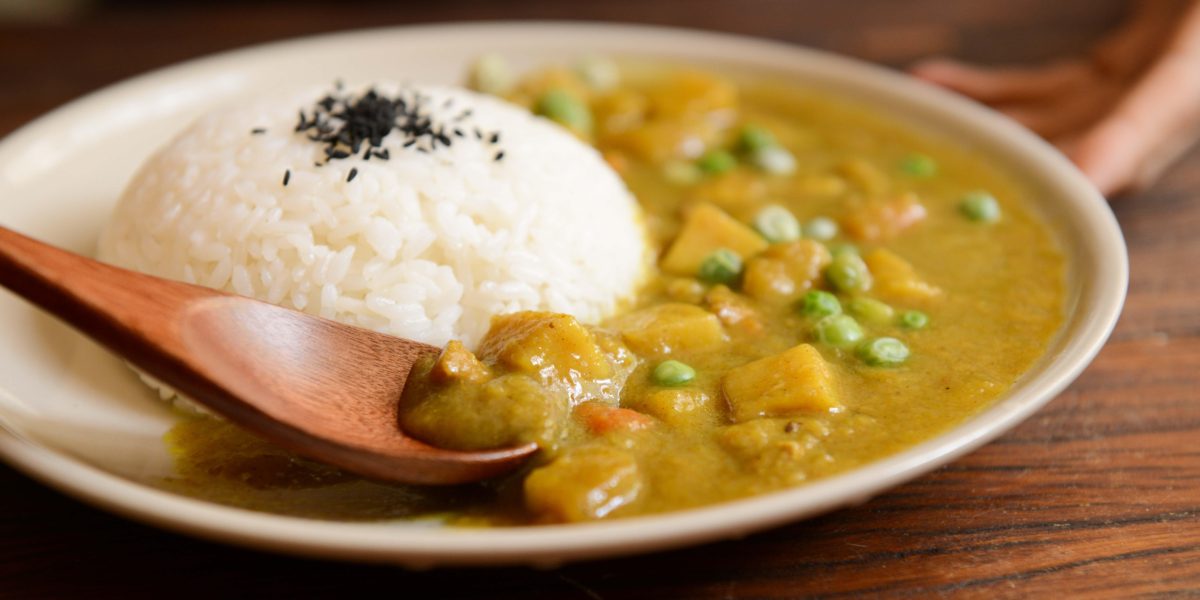
The Truth About Curry
You might have seen the word "curry" on menus, in recipes, or in the spice aisle of your local grocery store, but do you know it's origins? This Asian American Pacific Islander Heritage Month, we're diving into curry around the world -- and debunking common myths associated with the perception of curry.
Let's take a trip around the Asian continent:
Indian Curry
Contrary to popular belief, curry doesn't refer to one dish, stew, or sauce; in fact, historians actually believe that British colonizers anglicized the word "kari" - a South Indian gravy dish - and it became a blanket term for any spiced dishes from South Asia. This gravy is made with tomatoes and onions, blended with spices like cumin, turmeric, coriander, cloves, chili powder, cinnamon, and -- of course -- the curry leaf. Modern Indian curries are typically hearty, savory dishes with a thick, velvety consistency similar to a stew. Depending on the region, Indian curry can be prepared vegetarian or with meat.
East Asian Curry
It is believed that curry was introduced to Japan by the British during the Meiji era in the late 1800s-early 1900s. While India was under British colonial rule, the Royal Navy introduced the Japanese to a spice blend they simply called "curry powder." The Japanese added this spice blend to rice in a dish known as "curry rice," which is commonly served with picked vegetables as condiments like fukujinzuke (sweet pickles) and rakkyo (pickled pearl onions).
In Thailand, curry is traditionally made with a curry paste that is then sizzled hot and fast with oil, and thinned with a liquid like coconut milk to create a soup-like consistency. Thai curry often features a blend of lemongrass, chilis, Thai basil, lime leaves, and coriander. Sometimes this paste is made with shrimp to add a bold umami flavor to the curry base.
South East Asian Curry
The blend of curry powder varies throughout the Asian continent, but in Malaysia this blend is usually made from cinnamon, turmeric, chilis, garlic, and shallots and is used as a rub on various meats that are then simmered with coconut milk. This sweet and savory spice blend features a kick of heat from the chili peppers. Due to its position on the Strait of Malacca, an important maritime trade route, Malaysian curry has influences from British, Indian, and Chinese roots making this a truly multicultural curry.
While The Philippines are known for being under Spanish rule for over 300 years, there were two years in the 1760s that it was under British rule. During this time Indian soldiers, known as Sepoys, are believed to have introduced curry. Filipino curry has much less heat than Malaysian curry and tends to lend itself to traditional Filipino flavors like ginger and bay leaves. North Filipino curry has a more stew-like consistency and features fish sauce, chicken, and curry powder mixed with garlic, onions, and ginger. But in the south, the curry is based with more turmeric and chili.

Are you a fan of curry? How do you typically enjoy it? Let us know on Instagram!
+++
At FLIK Hospitality Group we believe in great food, great service, and great people. Our wellness first approach ensures our food supports healthy and delicious choices, specially curated by our team of culinary experts and registered dietitians. At FLIK, we believe in seasonality in sourcing our ingredients and providing a customized approach to the culinary and hospitality needs of each client. Our dedication to providing quality hospitality service is unparalleled in the industry.
Join our team and see the FLIK difference. Where a job isn’t merely a job but the start of a career where you can flourish. Check out our current openings here:
Hourly Careers + Salary Careers
Have feedback or questions for our team? Email us at flikblog@compass-usa.com.